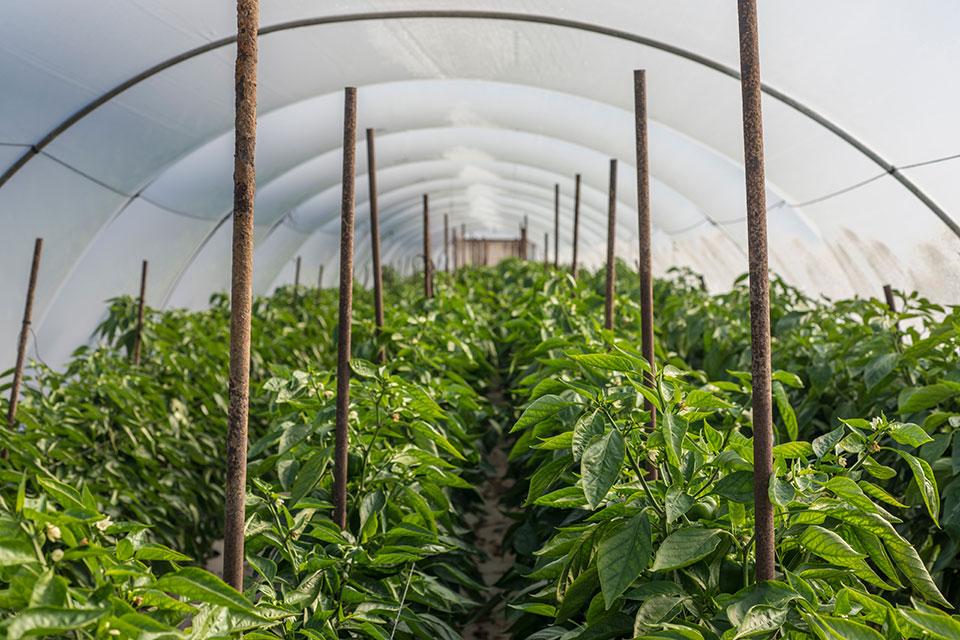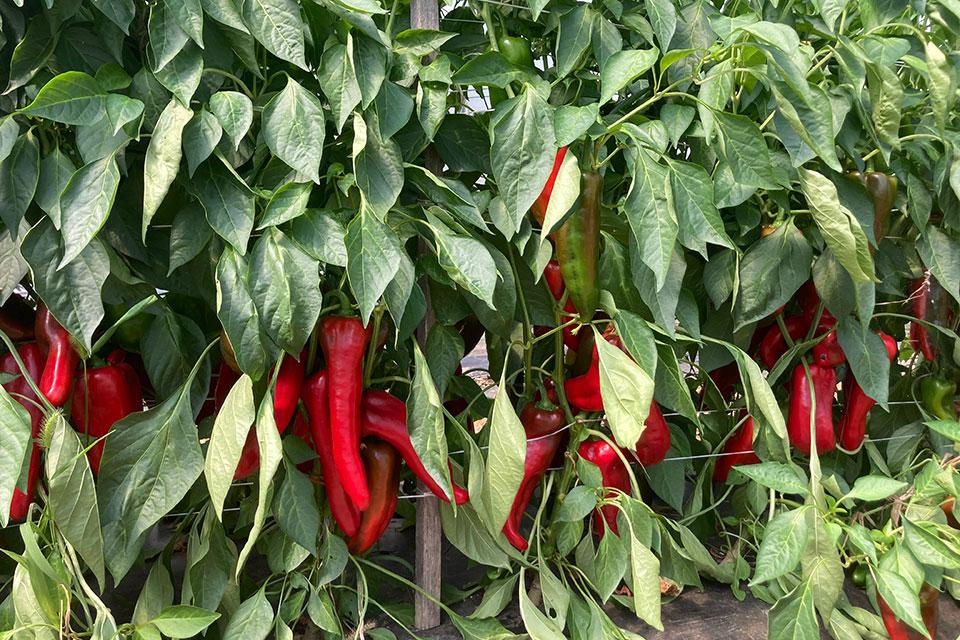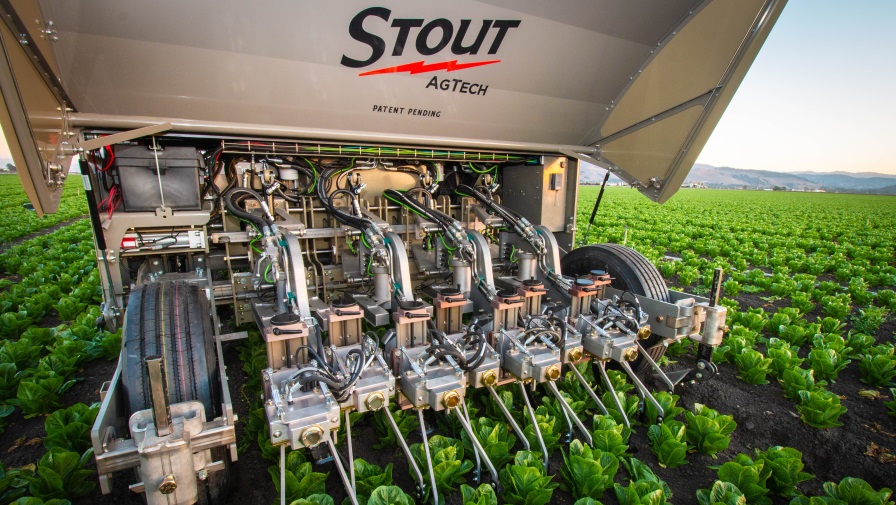10 Pointers To Grow and Harvest Great Peppers Under Cover

Successfully growing peppers under the cover of a hoop house takes a systematic approach. Photo: studiodr – stock.adobe.com

When I bought my farm 16 years ago, the previous farmer produced tomatoes conventionally for more than 25 years. My first soil test showed zero organic matter. My first root pathology reports showed disease. I spent several years planting cover crops and integrating organic compost into the fields in hopes of bringing them back to life.
It slowly worked. But even when the soils were healthy again with abundant organic matter and balanced nutrients and micronutrients, my tomatoes and peppers still struggled with disease.
As a diversified market and Community Supported Agriculture (CSA) farmer, I value yellow, orange, and red peppers. They bring color and diversity to a CSA box, farm stand, and farmers’ market booth. They sell well to restaurants and wholesalers because they hold for several weeks postharvest.
Colored peppers are not a crop I can afford to take out of my rotation. So after six years of producing mediocre field-grown peppers, I moved my pepper production inside.
First two 150 ft beds, then four, then eight. Now, 10 years later, I grow the majority of my peppers under the cover of affordable, easy-to-build and low-tech tunnels.
What were the specific issues I was facing that led me to move my peppers indoors?
- Weather challenges and the need for consistently successful crops. Like many growing climates, ours in Western North Carolina can be variable year-to-year. In dry years, my field peppers thrive. In wet years, the peppers are diseased, produce low yields, and don’t hold as long as I need postharvest. I follow all of the industry standards for producing great outdoor peppers: I only use drip irrigation, I rotate our peppers on a five-year schedule, I remove all debris, I keep the area well weeded, I do not compact our soils, I test my soils and amend with the specific needs of peppers. I choose disease-resistant varieties, etc. But in wet years, when conditions lead to disease, the harvest totals are just too low to justify the work of field prep, trellising, and clean up. Since we can’t predict wet and dry conditions months in advance, our peppers are always a gamble.
- The need for longer-lasting plants and yields. When I grow peppers outdoors, they give me one month of fruit and then rapidly decrease. This is partly because many varieties of peppers set fruit when temperatures are below 60°F or above 90°F. If pepper plants are thriving, they will produce great late season fruit sets again once temperatures cool, but in the field my plants were often diseased enough by August that I felt the need to pull them out before the late flushes could fully ripen. In the houses, my peppers continue to produce and ripen through September and October, which is when demand for peppers is highest at market.
Peppers are very well suited for growing in a hoop house. When I transitioned growing peppers indoors, I experienced none of the challenges I had in the field, even when I built the hoop houses directly on top of the beds where the previous disease issues had been. This is still true after 10 years of indoor pepper production.
And let me be clear, I’m a busy diversified farmer growing on seven acres and in 13 hoop houses with a staff of two-three. Peppers are one of the 40 different crops I grow. I do not have the resources to scout my houses and remove every odd-looking leaf or fruit, and I do not put significantly more time or resources into the peppers because they are in a tunnel. The houses themselves just are that impactful to my pepper yields.

Red peppers growing happily in a hoop house.
Photo by Anna Littman
I have systematized pepper growing in houses.
We’ve had consistent success with these techniques:
1. We start the plants on a heat mat in my propagation house in 20 strip trays in early to mid-February.
We pot them up to 72s when they have their first true leaves. We plant the peppers into houses in mid to late April. My farm is located in USDA Hardiness Zones 6b/7a.
2. We grow bell and Italian-style peppers in 30-inch-wide beds.
We plant them in two rows per bed. The rows are 12 to 15 inches apart and the plants are 12 inches apart in the rows.
I’ve had consistently high yields with this spacing indoors and no pest or disease issues and very few culls. There are lots of great research studies out there about pepper spacing.
3. We test our soils in each individual hoop house before planting and amend them with a combination of feather meal, potash of sulfate, biochar, organic compost that contains phosphorus, and
other micronutrients.
The amounts of each of the ingredients depends on the soil test results. Peppers need a higher level of phosphorus and calcium than some other crops, so paying close attention to those nutrients is important. Indoor cultivation can lead to an excess of some nutrients and micronutrients, so annual soil tests are especially important for this type of cultivation.
4. We plant our indoor peppers into landscape fabric to suppress weeds and retain moisture, covering both the growing bed and the space between beds with the fabric.
5. We irrigate the peppers daily for 1 to 2 hours per day depending on the weather.
6. We use biologicals to support the plants by spraying Regalia and Grandevo (Marrone Bio) weekly.
7. We create trellis systems with T posts positioned every 4 to 5 feet in each pepper row and weave with tomato twine between the posts. We weave about every three weeks through the season, depending on plant growth.
8. I have tried trellising peppers up a string in the houses and different pruning techniques recommended for house grown peppers, but I have found that a simple basket or box weave and minimal pruning work well.
9. We monitor the heat levels inside our houses carefully. We open the sides, and we utilize shade cloth and fans to regulate temperature.
10. We harvest our peppers weekly all season, with the first harvest happening in late June and the last big harvest happening at our first sustained forecasted outdoor temps below 28°F in October or November.
Because my pepper yields are so much higher indoors, I’ve been able to reduce the number of bed feet I plant by 30%. Even with that reduction, my pepper yields are higher today than they were eight years ago when I grew them outside.
Hoop house space is always limited, so I only grow red, yellow, and orange bell and Italian peppers in the tunnels. I plant small fruited, quickly ripening pepper varieties outdoors. These include green peppers, shishitos, and lunch box peppers.
Indoors, the peppers ‘Escamillo’ and ‘Carmen’ give us the highest yields and best-tasting peppers.
Bell peppers sell better at our markets than the Italians, so we grow those too and prefer the varieties that have been bred for low-tech greenhouses or even field production such as ‘Milena’ and ‘Sweet Sunrise’ for orange/yellow and ‘Olly’ and ‘Sprinter’ for reds.
Since I started growing peppers in our unheated tunnels, they have become one of my favorite crops to grow and to eat. My hope is that by featuring these beautiful, tasty treats, we as farmers can encourage our customers to purchase and love them too.










